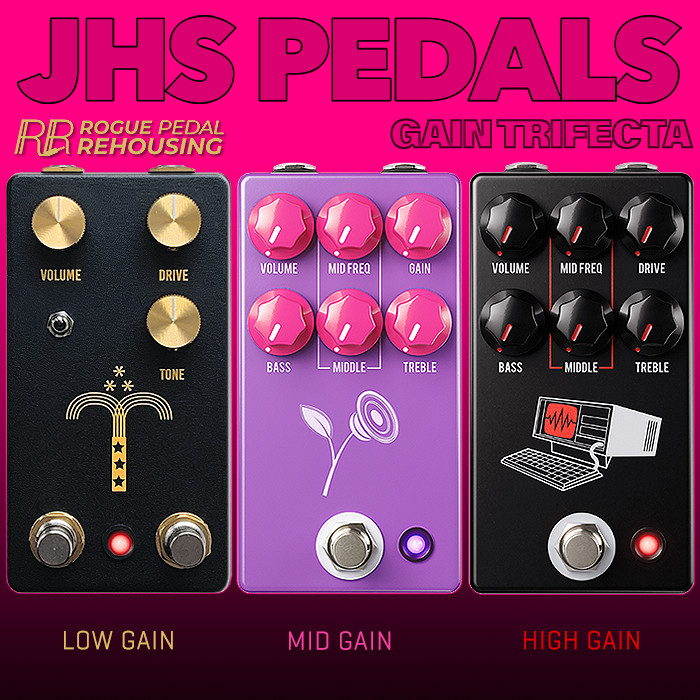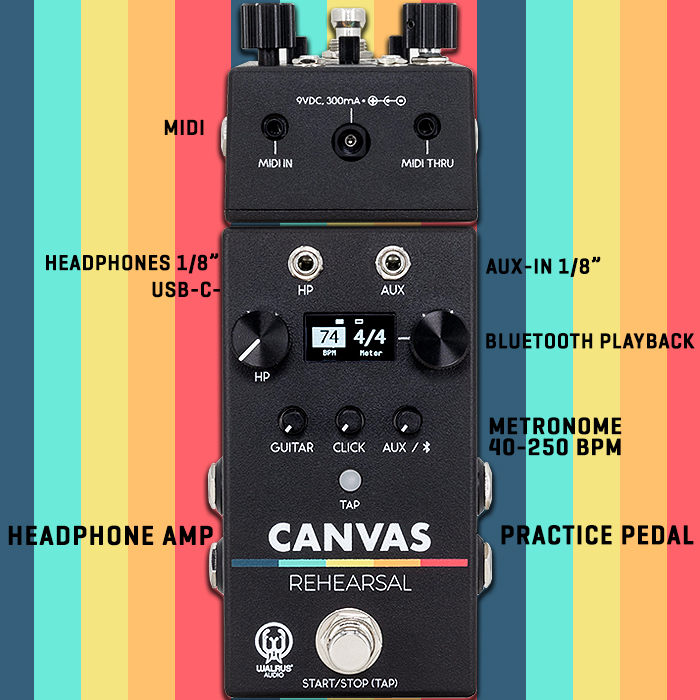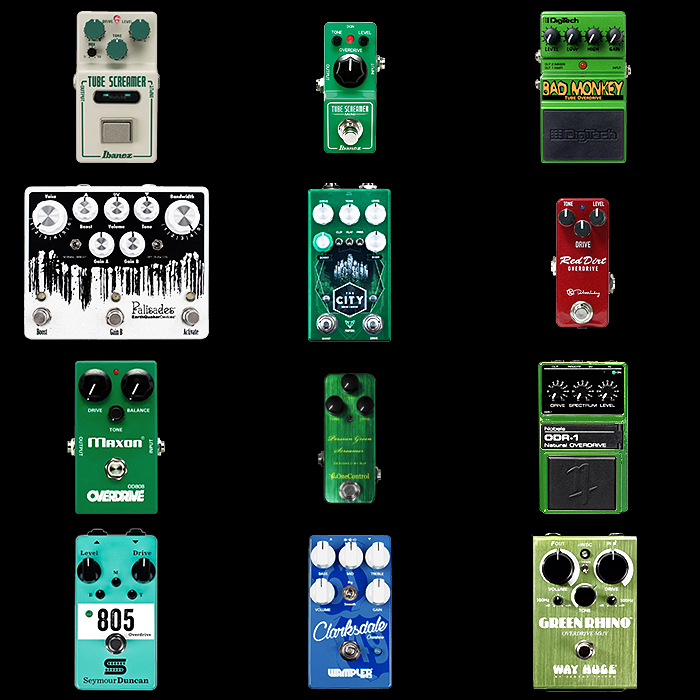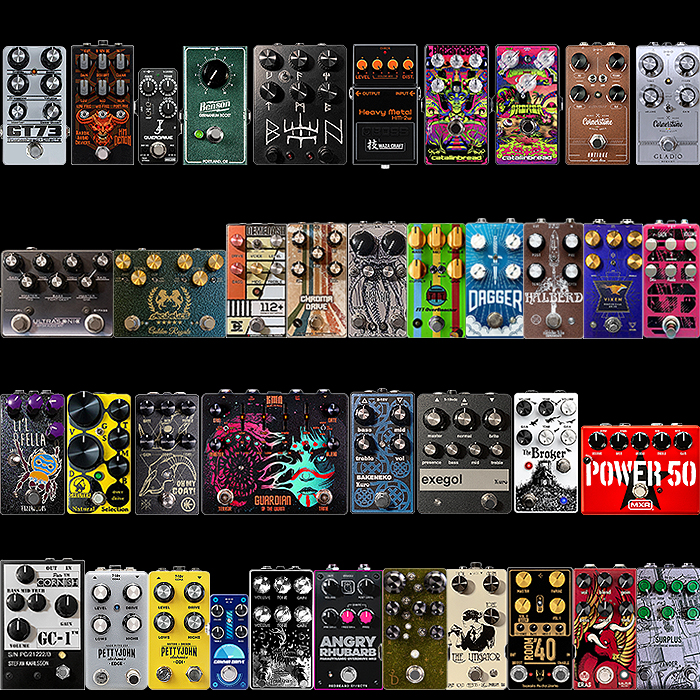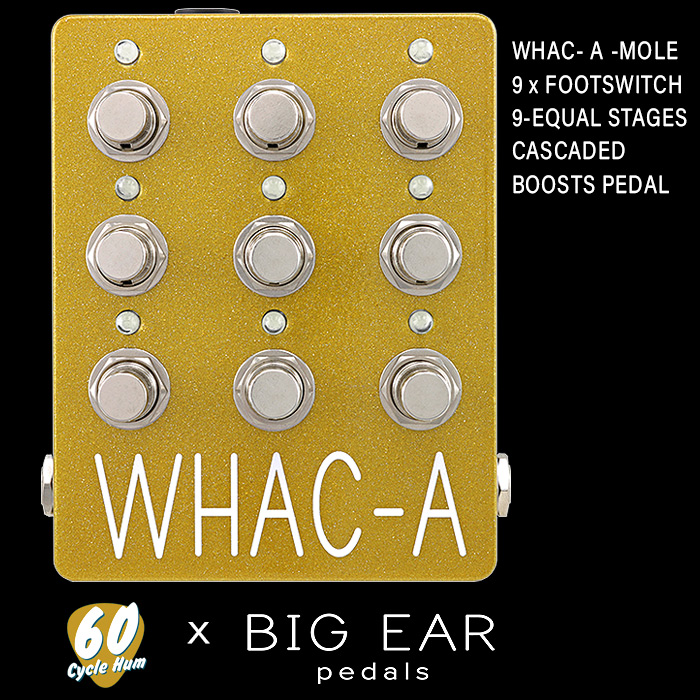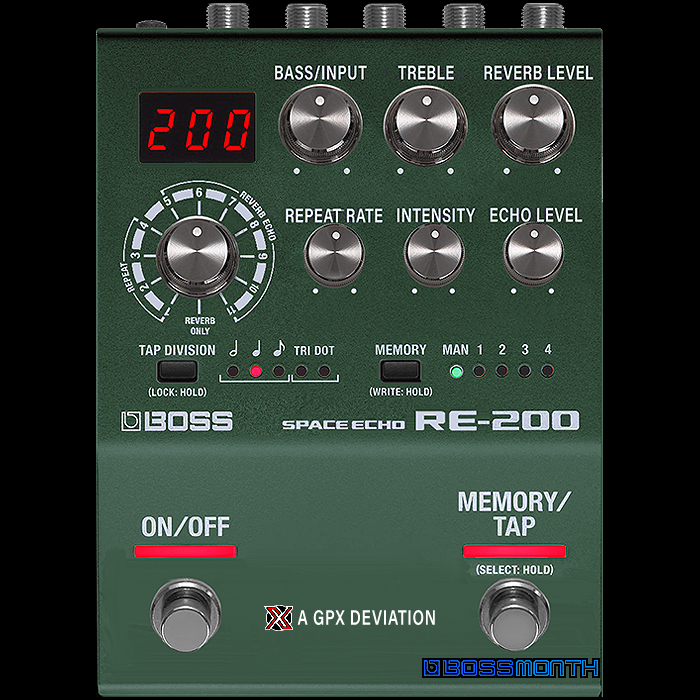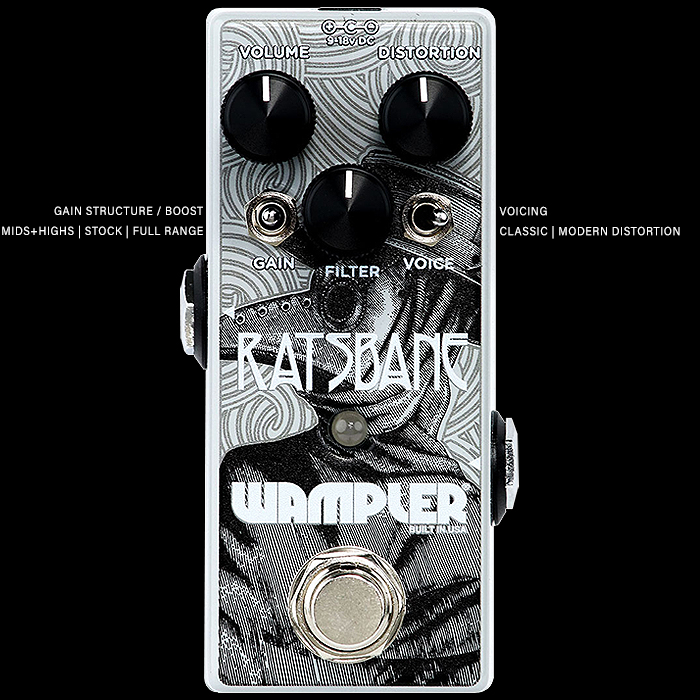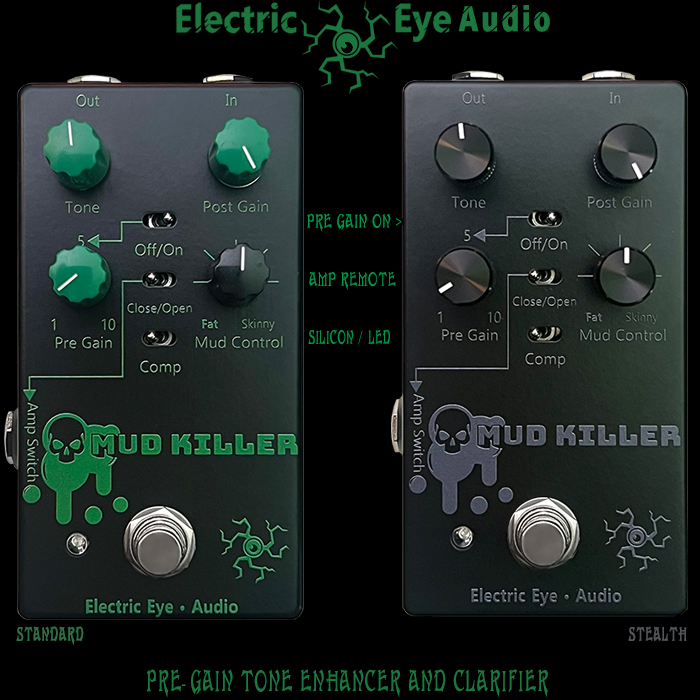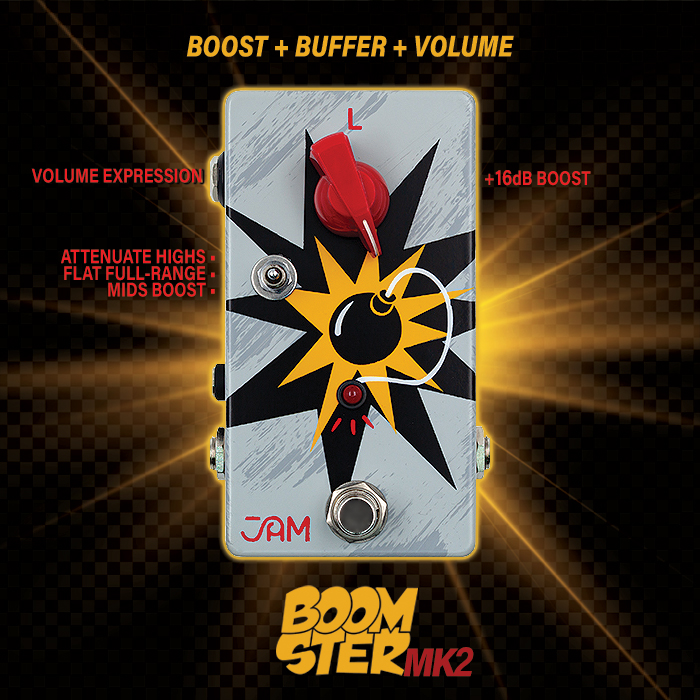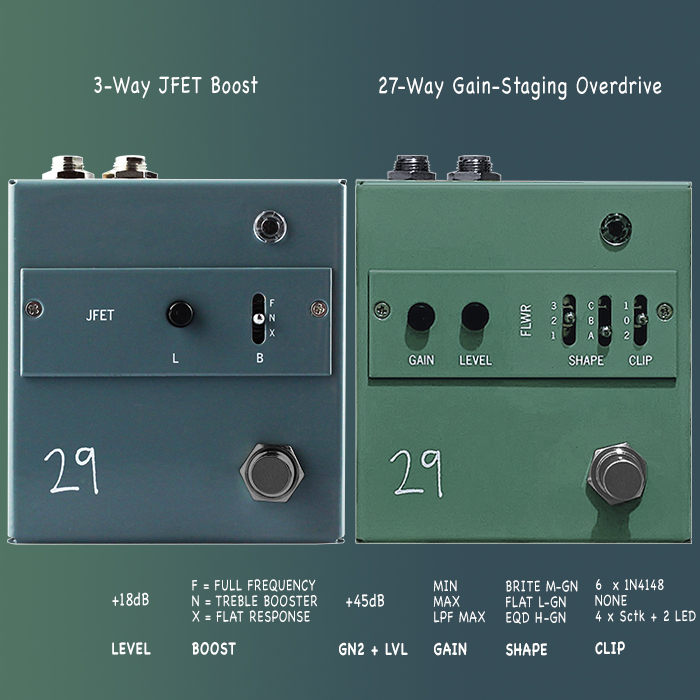Kuro Custom Audio's Bakeneko EQ / Clean Boost is a Precision Calibrated Tone-Shaper and Balancing Equalizer

When I first clocked the Bakeneko, the first thing that came to mind was EQD’s Tone Job EQ/Boost - both are 4-knob varieties and come in attractive blue boxes, while not every EQ is created equal - and each targets somewhat different frequency clusters.
Essentially the Bakeneko is a passive James Tone Stack EQ (similar to that found on original Ampeg and Matamp Amps) with added Mids, where you can Boost/Cut the Bass and Treble by ±20dB. The Bass control is focused on 120Hz, and Treble is focused on 1kHz-3kHz. While the Mid control sweeps the 350Hz-650Hz cluster for that perfect mids push / punch. The below infographic illustrates the key frequency crossover points - including the -3dB Knee cutoff.
Kuro’s Giulio Favaro has expertly selected the key frequency clusters which yield the most impact. And he spent an extended development period ensuring that the EQ was as musical as possible, and has the very best signal to noise ratio - as a lot of EQ pedals can add some unwanted noise into the mix. The Bakeneko was designed to be effortlessly efficient and easy to apply :

For me the three principal uses for this pedal are best defined as Tone-Shaping. Balancing-Equalization - which I will also call Balancing EQ, and Tone-Sweetening - per the following details :
Tone-Shaping
This is the essence of an EQ - carving out and enhancing frequency profiles for pedals which have inadequate tone-shaping abilities of their own. This means that the Bakeneko is the ideal companion for all your favourite single Tone/Filter/EQ-knob pedals. And means tempering the mids on a Tube Screamer, boosting mids on a Big Muff, or beefing up the Lows on a Rat pedal for instance.
There are several scenarios that suggest themselves for Tone-Shaping - and no shortage of pedals that can be enhanced and re-voiced by such an EQ. The Tone-Shaping dynamic is typically about enhancement and improvement - helping to make a pedal stand out better in the mix - or smoothing off certain rough edges in order to achieve a more rounded tonality.
Balancing-Equalization
Balancing EQ is really about signal maintenance - where the task is to match inputs and throughputs to a preferred baseline signal profile. A great example of this is matching different guitars to a rig - where the EQ can bring a wide variety into alignment with the signal baseline - where one guitar's input may be louder, sharper, darker or otherwise differentiated from the desired outcome and the typical norm.
For Balancing purposes that sort of EQ is often found near the start of the chain - to bring each of those different guitars in line. Another use of Balancing EQ is towards the end of the chain - where I typically deploy a Balancing EQ to restore Highs lost in the patch cabling, or otherwise slightly filtered out by my noise gate.
I also often deploy such an EQ in Treble-Booster mode - to enhance upstream fuzzes in particular. In fact most Fuzzes have very limited tone-shaping options - so deploying those in conjunction with a Bakeneko EQ often makes a lot of sense.
Tone Sweetener
There is actually a 3rd mode of deployment which Giulio tells me the Bakeneko is being increasingly used for - and that is as a Tone Sweetener connected before Digital Multi-FX Processors like the AxeFX, Kemper and Helix. Players are setting their Bakeneko up very flat where even with all dials at noon - it enhances frequency response and delivers more warmth and dynamics - which sort of tempers the typically slightly colder more brittle nature of some digital effects.
My use of Preamp Boost, Compressor and Germanium Booster at the head of my pedal-chain does a similar task for my core signal. You see the 29 Pedals EUNA doing a similar magic - where it combines some sort of preamp booster with EQ enhancements - very much to deliver that same sort of Tone Sweetening. Obviously the Bakeneko is a far more pedalboard-friendly format for that sort of thing!
EQ Placement
I personally run a very long chain of 41 pedals - and I apply a variety of EQ's throughout the chain - particularly in those classic Front, Middle and End positions / slots - where the top-and-tail EQ's tend to be on balancing duties, and the middle one is more of a tone-shaper.
Obviously if you're needing to add a lot of Volume - and the Bakeneko can indeed provide a clean boost of +40dB - which means that a significant volume in front of whatever you're EQ'ing will mean a not insignificant gain boost - which is why I almost entirely deploy a Tone-Shaping EQ after the pedal I am targeting, while for a Balancing EQ - and as long as your volume is not set too high - you can have that either before or after very successfully.
Demo
Final Thoughts
I am very used to deploying 3-Band EQ to my chain, and often buy certain pedals specifically because they have 3-band EQ. While many pedals simply have only a single control, and some of those vintage pedals have no Tone Controls at all.
I am of a mind that I think all pedalboards should deploy some sort of EQ pedal along the length - as most need a Balancing EQ at the very least - to ensure signal maintenance throughout your signal chain - and regardless of what else you throw at it.
Also some pedals are under-powered or just a tiny bit compromised / flawed - a little bit dark for instance, or a little too bright and fizzy - and a decent EQ like the Bakeneko can totally tame and improve that.
For me the EQ Pedal is one of the absolute essential utilities - and while some can be more tricky to deploy - like the multi-band 10-band or more graphic style equalisers (high sensitivity) - where the Bakeneko is rather incredibly easy to deploy. The taper of each of those dials is absolutely just right - and you intuitively know where you're going to land, and are able to get there very rapidly.
I said at the beginning that not all EQ's are created equal - and the Bakeneko is certainly pretty unique in how well honed and calibrated it is. It is for sure a high-fidelity audiophile device!
The Bakeneko EQ + Clean Boost is available right now on the Kuro Webstore - for a very reasonable €169. Go get yours now!







